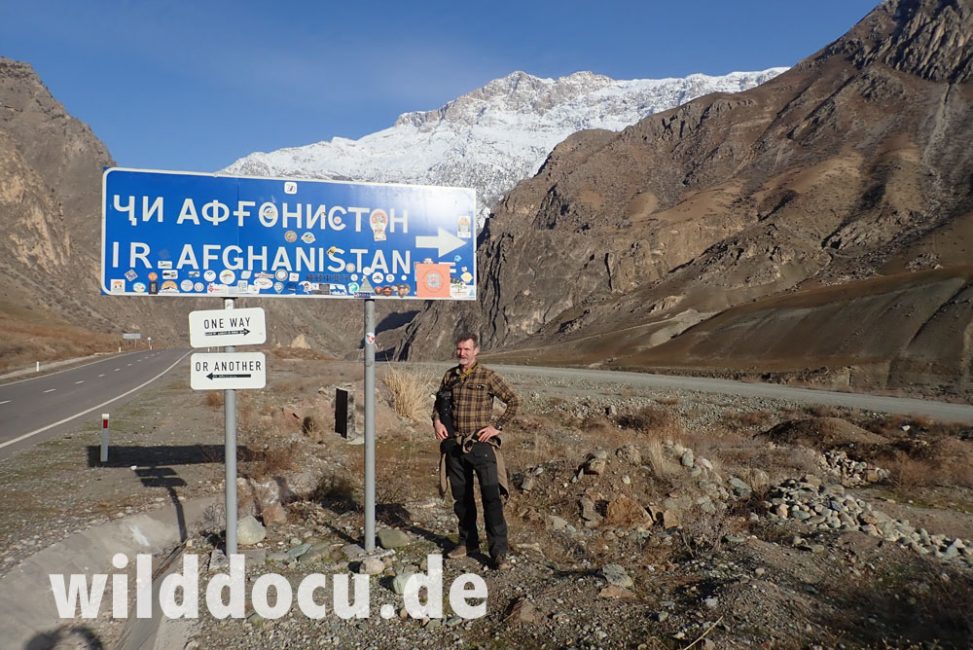No, I haven’t been there. But during my trip to Tajikistan I had the chance to look across the border every day, got an impression how life is over there and even saw some animals. I also put some useful information together.

For most people it is the forbidden country. But actually it is not. You can already travel to Afghanistan (see below) and the ongoing peace talks nurture the hope that one day the whole country will open up again.
For biologists and mammal watchers it should be a very interesting place. Some taxa are near-endemic, shared only with one or few neighbours like for example Pakistan. Some of these are Tajik Markhor (Capra falconeri heptneri), Straight-horned Markhor (C. f. megaceros), Kashmir Markhor (C. f. cashmiriensis) and Afghan Urial (Ovis vignei cycloceros).
Some populations have never been studied thoroughly at all. According to Zalmai Moheb (University of Massachusetts), to whom I talked last year, the Hindu Kush Mountain Range in Wakhan National Park remains one of the least biologically explored areas in Afghanistan. For example the subspecies status for Siberian Ibex (Capra sibirica) and Urial (Ovis vignei) has not even been specified yet.
During my staying in Tajikistan we had many opportunities to look across the border, get an impression of the life standard over there and also see some animals.

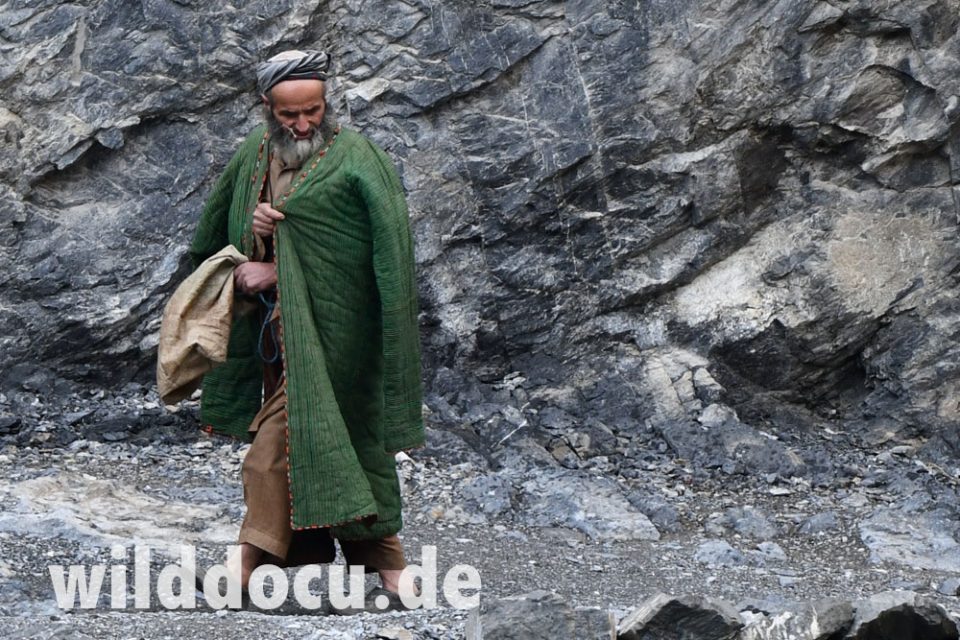

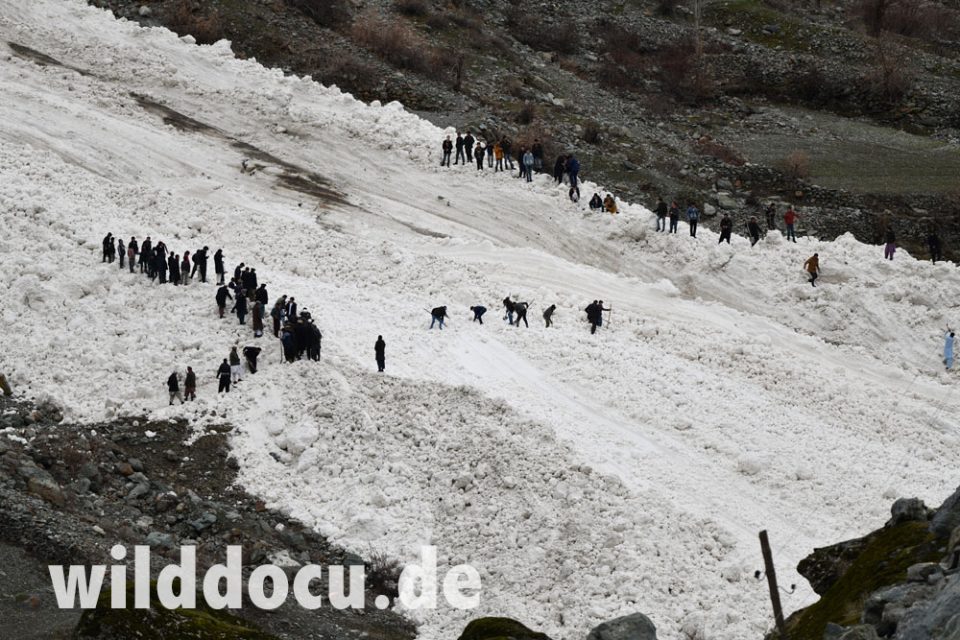
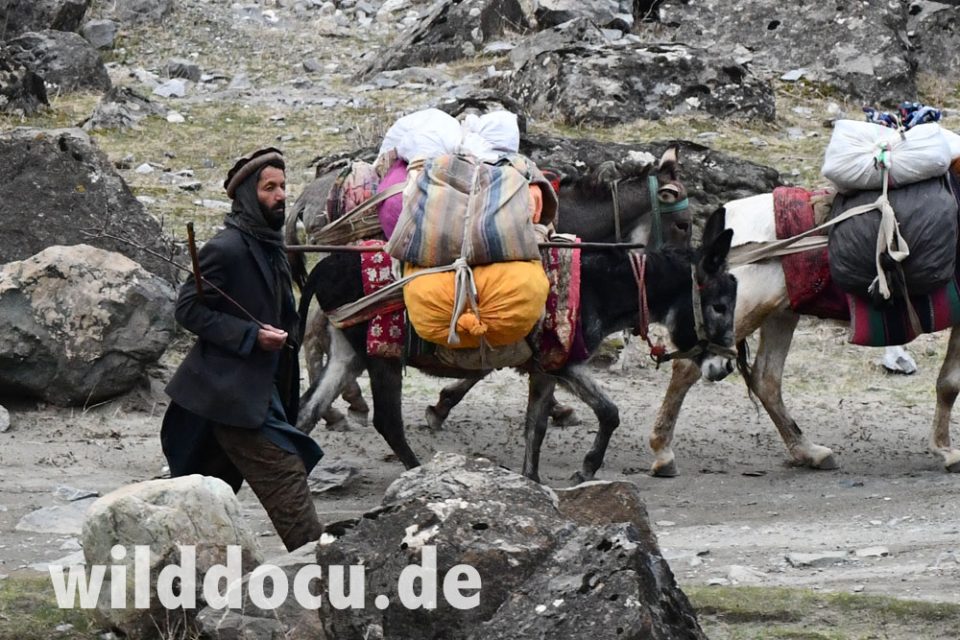
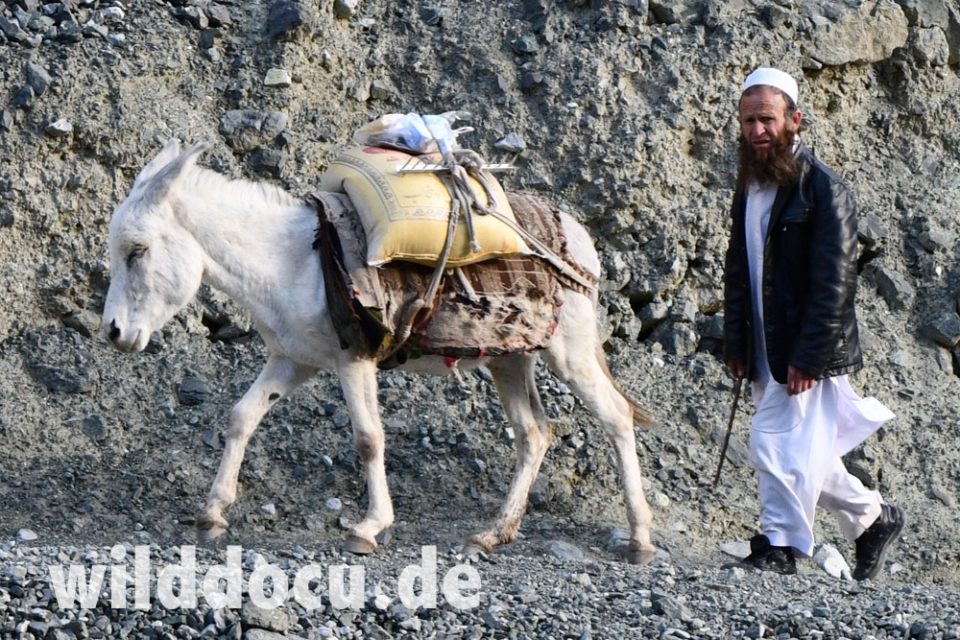
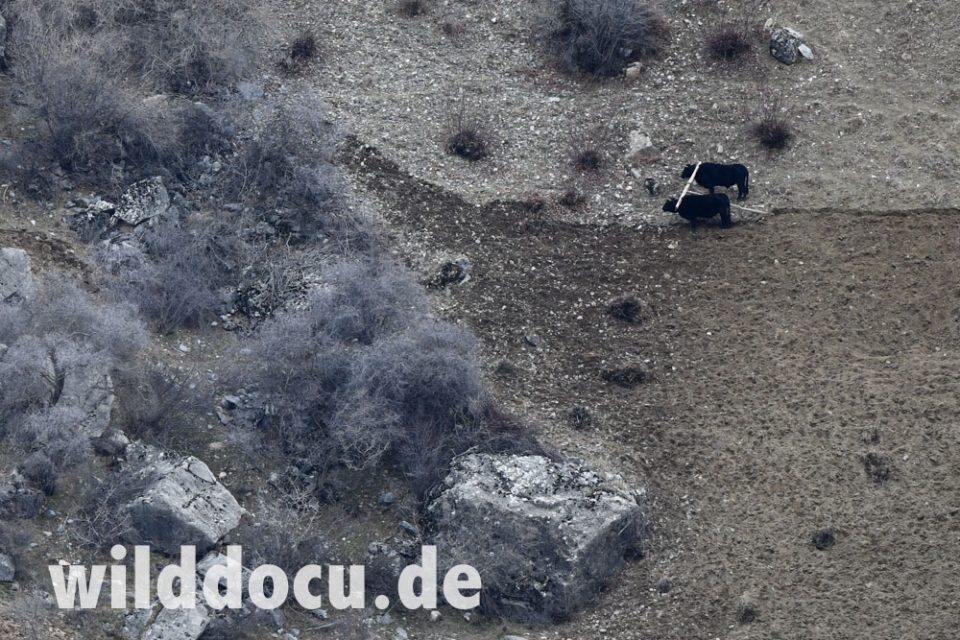

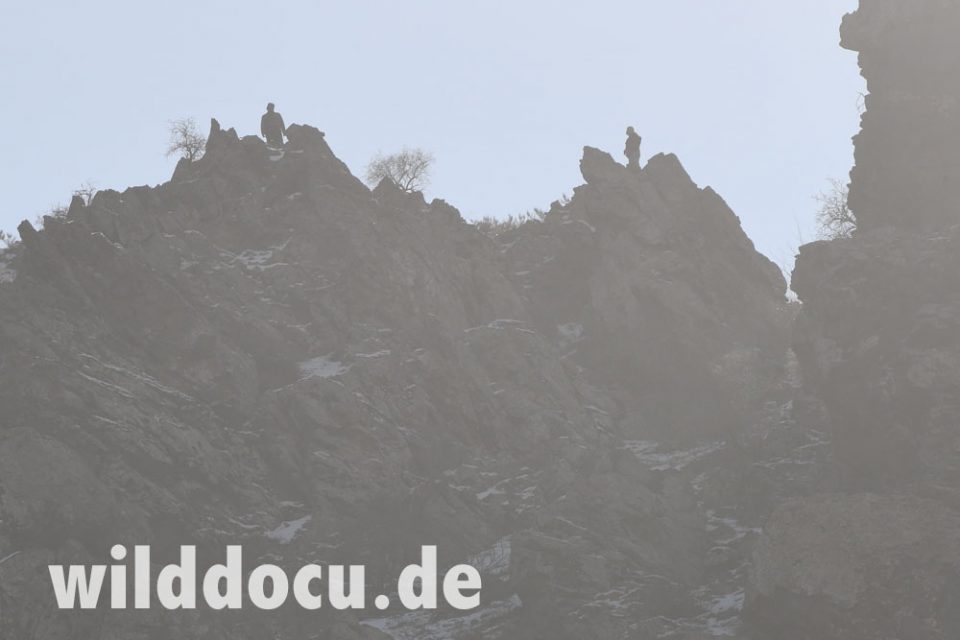
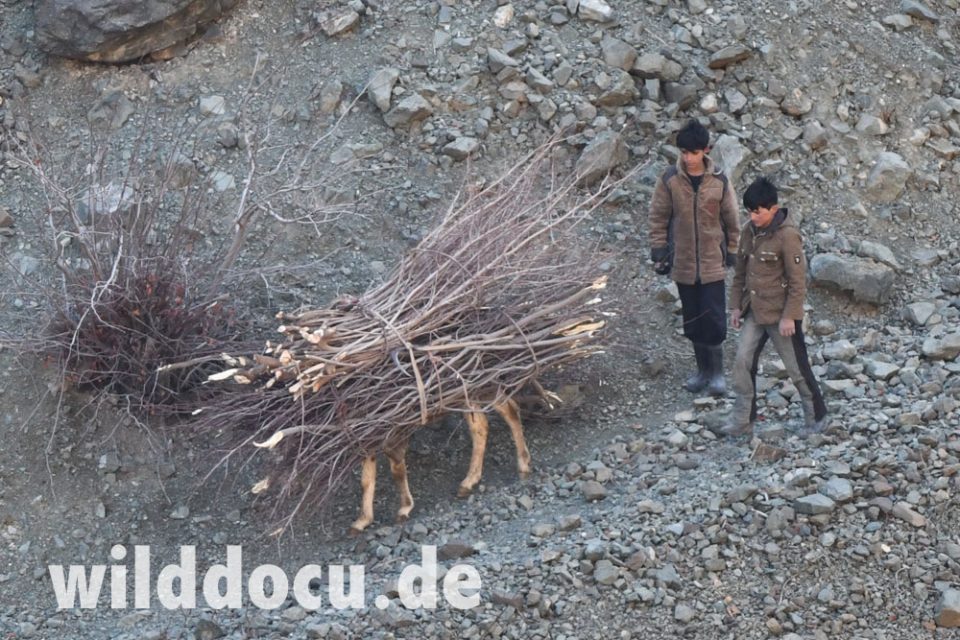
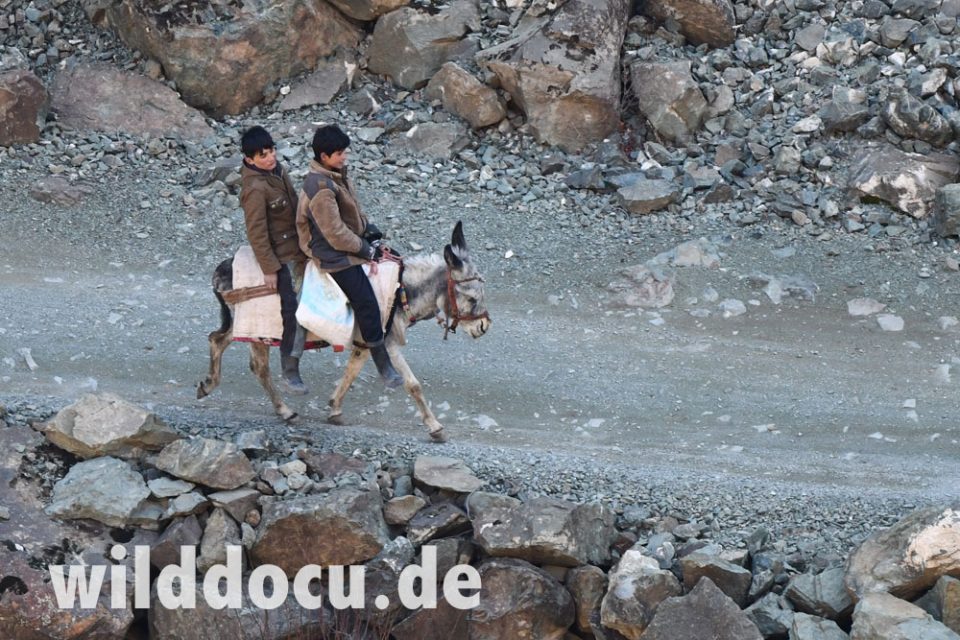
One of our Tajik guides discovers an Ibex on the Afghan side.


Our Tajik guides confirm that they see Ibex, Markhor and Brown Bear on the Afghan side of the Panj Valley once in a while – although in lower numbers compared to the Tajik side. The reason could be that local people hunt for subsistence and that there is no community-based wildlife management in place like in Tajikistan.
Travelling in Afghanistan
If you wanted to explore Afghanistan you could do that in the so called Wakhan Corridor, a panhandle shaped strip of land in the extreme north eastern part of Afghanistan. This is where the Pamirs meet the Hindu Kush. It’s a legendary place that saw famous explorers such as Marco Polo and Sven Hedin travel through. It’s also where the fringes of the Russian and British empires collided in the 19th century and instigated a quest for influence in Central Asia. During the peak of this secret, geo-political chess game known as the Great Game the Wakhan Corridor served as a buffer zone to avoid military escalation between the two super powers.
Jan Bakker and Christine Oriol write in their book „Trekking in Tajikistan“ about the Wakhan Corridor: „Nowadays this sparsely populated high-altitude mountain wilderness is a true paradise for trekkers who seek a genuine mountain adventure.“ A trek they have worked out starts and finishes at Sarhad-e-Broghil and takes you all the way to Chaqmatin Lake (total distance: 177 km/10 days). The trail takes you over several very high mountain passes (highest point: 4905 m – Shpodkis Uween Pass). „The people of the Wakhan Corridor are incredibly generous and welcoming. This is the other Afghanistan!“
Vladimir Dinets mentions in his report the following mammal species for the Wakhan Corridor: Huge numbers of Long-tailed Marmots, lots of Large-eared Pikas on talus slopes, and a Pallas’ Cat in the vicinity of Sast. He writes that the part of the valley near the Chinese border is completely deserted and has herds of Marco Polo Sheep, Blue Sheep, Siberian Ibex, Snow Leopards, Wolves and Brown Bears. Afghan biologist Zalmai Moheb wrote me (2020-04-17) that he can not confirm the presence of Pallas‘ Cat and Blue Sheep.
You can apply for an Afghan tourist visa in advance. The embassies in London, The Hague, Dubai, Vienna and Washington DC are known to grant visas but in most cases you have to apply in person.
However the easiest way to gain Afghan visas is to use the Afghan consulate in Khorog, Tajikistan, which can issue the necessary visa on the same or next day. It is also arguably better for safety, as the consular staff are acutely aware of the current security situation over their border and will not issue visas to cross if there is any increased risk. – Thanks to Marley Burns from Silk Road Adventures, who provided this info.
To enter the Wakhan Corridor you don’t come from the South. Overland travel from and to Kabul is said to be still „highly dangerous and should not be contemplated“. Instead you enter the Wakhan Corridor via the Tajik town of Ishkashim.
However also Ishkashim is not really the place, where you want to spend much time. The German “Auswärtiges Amt” (Bureau of Foreign Affairs) writes (2020-04-22): „Travel to the Tajik border district of Ishkashim is strongly discouraged.“ Unfortunately this is the place, where you get your other permits to be allowed to travel in the Wakhan Corrdor. It is recommended to get these done by a local tour operator.
Finding a reliable trekking guide who speaks English to accompany you in the Wakhan Corridor is difficult, according to „Trekking in Takikistan“: „Malang Darya is a central figure in organising trekking expeditions in the Wakhan. He speaks English well and has more than 10 years of experience arranging trips for tourists in this part of the world. Contact him well in advance to reserve a trekking guide and a cook as quality trekking staff are scarce. Note that it may take a while to get an answer back as internet in the Wakhan is unreliable. For more details, check www.wakhan-adventure.com. He can be reached by phone on +93 79 476 6067 (Afghanistan) or +992 93 929 7661 (Tajikistan). Another reliable English speaking guide is Safi Usmani, +93 79 899 9062. An english-speaking guide costs US$50/day, a cook US$30/day and pack animals around 1000 Afghani (US$15-20).“

You will find much more detailed information in „Trekking in Tajikistan“.
Literature:
Bakker, Jan and Oriol, Christine, 2018: Trekking in Tajikistan – the northern ranges, Pamirs and Afghanistan’s Wakhan Corridor. Cicerone.

